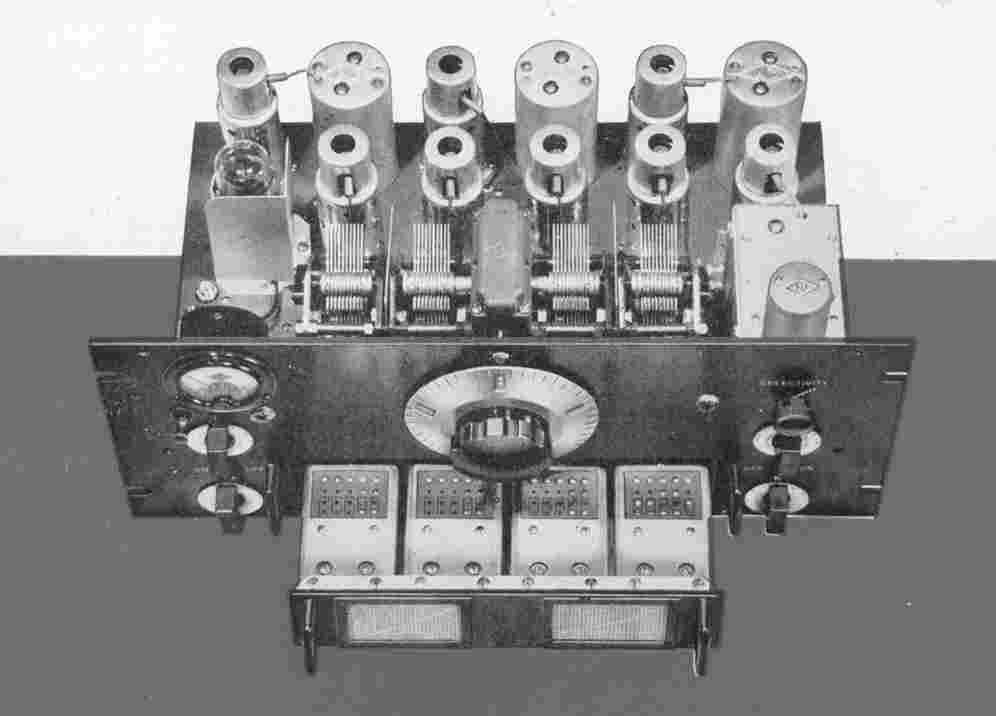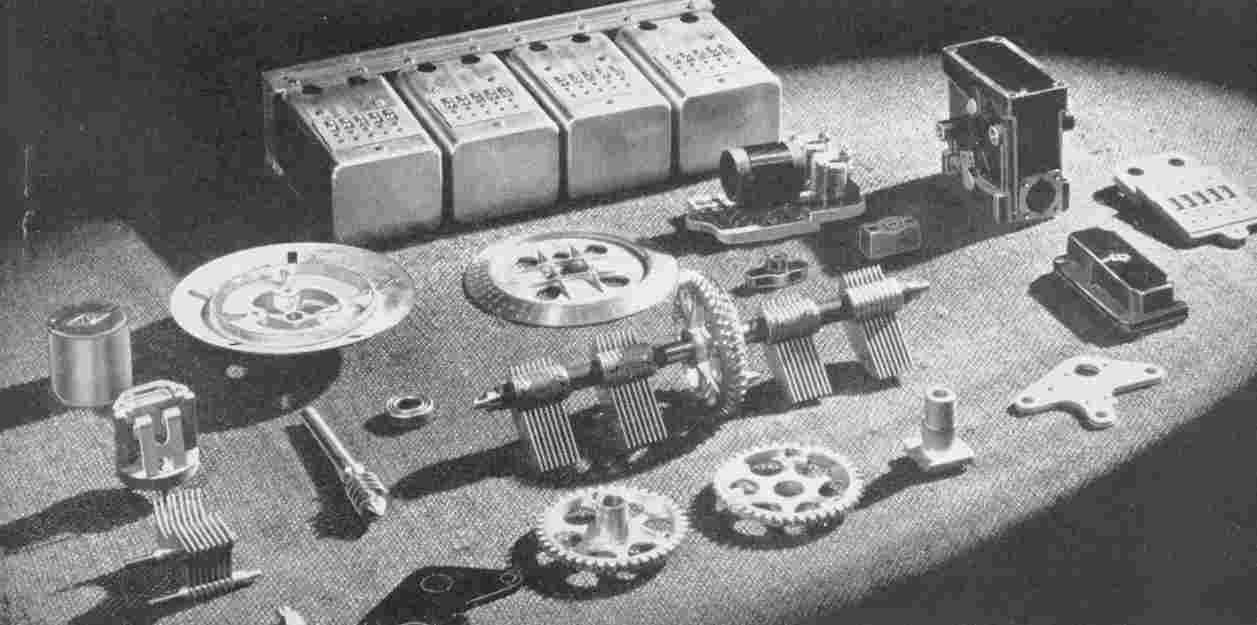
| The HRO is based on Nationals successful AGS receiver, but takes the design to a distinctly higher level. Serious measures were take to improve frequency accuracy, stability, and image rejection. National, like Hammarlund was a manufacturer of radio parts, especially variable capacitors. They turned out series of custom parts that made the HRO unique. |
Technical
Features:
|

| The
"Precision Worm" gearbox uses ball bearings and spring-loaded
anti-backlash gears. The shaft is turned by a "Micrometer"
dial
that reads directly to one part in 500. The dial revolves ten
times in covering the tuning range, and the numbers visible through the
small window change every revolution to give consecutive numbering, by
tens, from 0 to 500. The "HRO" dial became a National icon that remained a part of their product line all the way to the solid-state HRO 500 receiver introduced in 1968. |
 |
